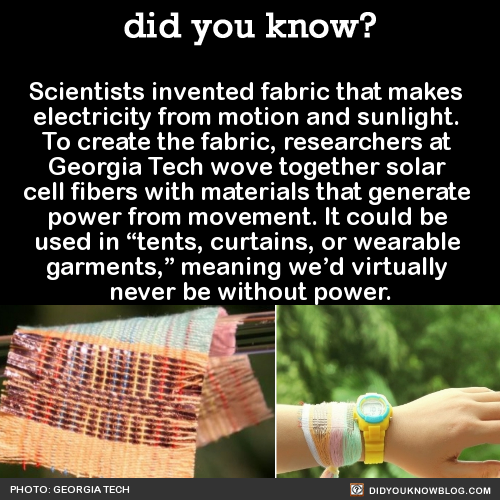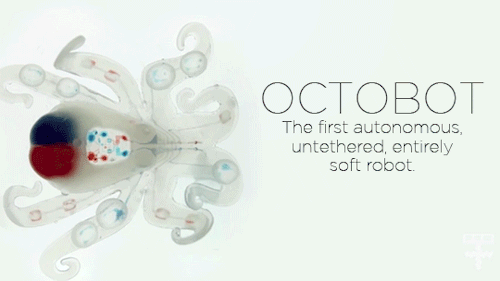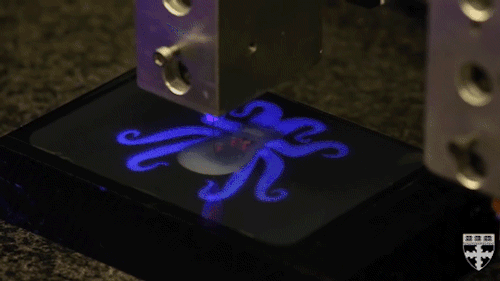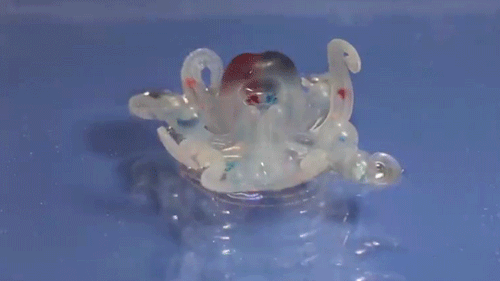A 25-year-old Student Has Just Come Up With A Way To Fight Drug-resistant Superbugs Without Antibiotics.

A 25-year-old student has just come up with a way to fight drug-resistant superbugs without antibiotics.
The new approach has so far only been tested in the lab and on mice, but it could offer a potential solution to antibiotic resistance, which is now getting so bad that the United Nations recently declared it a “fundamental threat” to global health.
Antibiotic-resistant bacteria already kill around 700,000 people each year, but a recent study suggests that number could rise to around 10 million by 2050.
In addition to common hospital superbug, methicillin-resistant Staphylococcus aureus (MRSA), scientists are now also concerned that gonorrhoea is about tobecome resistant to all remaining drugs.
But Shu Lam, a 25-year-old PhD student at the University of Melbourne in Australia, has developed a star-shaped polymer that can kill six different superbug strains without antibiotics, simply by ripping apart their cell walls.
“We’ve discovered that [the polymers] actually target the bacteria and kill it in multiple ways,” Lam told Nicola Smith from The Telegraph. “One method is by physically disrupting or breaking apart the cell wall of the bacteria. This creates a lot of stress on the bacteria and causes it to start killing itself.”
The research has been published in Nature Microbiology, and according to Smith, it’s already being hailed by scientists in the field as “a breakthrough that could change the face of modern medicine”.
Before we get too carried away, it’s still very early days. So far, Lam has only tested her star-shaped polymers on six strains of drug-resistant bacteria in the lab, and on one superbug in live mice.
But in all experiments, they’ve been able to kill their targeted bacteria - and generation after generation don’t seem to develop resistance to the polymers.
Continue Reading.
More Posts from Maevetheeuropan and Others

NASA scientists have reported that they’ve successfully tested an engine called the electromagnetic propulsion drive, or the EM Drive, in a vacuum that replicates space. The EM Drive experimental system could take humans to Mars in just 70 days without the need for rocket fuel, and it’s no exaggeration to say that this could change everything.
But before we get too excited (who are we kidding, we’re already freaking out), it’s important to note that these results haven’t been replicated or verified by peer review, so there’s a chance there’s been some kind of error. But so far, despite a thorough attempt to poke holes in the results, the engine seems to hold up.
Continue Reading.
Hearing: Next Steps to Mars: Deep Space Habitats
Subcommittee on Space (114th Congress) Next Steps to Mars: Deep Space Habitats
Stories of Your Life is weeeeeiird
But good. Ted Chiang sort of feels like the new Borges - sort of.
(The film Arrival is based on one of the stories in this book)

That’s tonight fyi

What’s hard about Mars?
Mars, unlike the Moon, is far away. It also has an atmosphere - but not a useful one. Atmospheric density, wind, dust storms… all of these things contribute to a larger list of circumstances that any given mission needs to be ready for.
All those circumstances contribute heavily to the cost, time and hard resources needed to be poured into the mission preparation. In addition, the vast distance to Mars means the cost of carrying all this prepared hardware must be covered.
The atmosphere of Mars is such that if you’re going too fast during entry, you’ll burn up. It’s such a low density however that parachutes aren’t tremendously useful.
During the Curiosity rover’s landing it needed a heat shield, a supersonic parachute, rocket boosters to slow it down, a sky-crane to allow Curiosity to drop to the surface like an interplanetary spider and then explosive propulsion to send the platform it dropped from a safe distance away to crash into the surface.
During this landing, the rover experienced a force of about 15 g’s. That force would make a 200 lb man weigh 3000 lbs. Without proper precautions it would make the average head snap down at about 150 to 165 lbs.
NASA’s developing a new type of parachute and it’s being attached to a flying saucer-like spacecraft known as the Low-Density Supersonic Decelerator. This is currently hoped to provide NASA with a stable go-to architecture for future Mars missions.
The red planet’s killed most missions sent there. Power for solar-panels on rovers get covered during planet-wide dust storms. Some missions smashed into its moons. Some have smashed into its surface. Others have simply missions the planet entirely only to drift away as Mars dances around the Sun.
The world is an untamed place and has sought to buck all attempts to temper its mysteries.
(Image credit: ESA / DLR / FU Berlin (G. Neukum) / animation by Emily Lakdawalla)

Mars used to be much more Earth-like than we once thought. The Curiosity rover recently discovered high levels of manganese oxide, which can only exist in oxygen-rich environments. This means Mars used to have as much oxygen as Earth and plenty of water on its surface. Source Source 2

Scientists invented fabric that makes electricity from motion and sunlight. To create the fabric, researchers at Georgia Tech wove together solar cell fibers with materials that generate power from movement. It could be used in “tents, curtains, or wearable garments,” meaning we’d virtually never be without power. Source








Very strange things happen to your body if you spend a year in space
NASA Astronaut Scott Kelly returns to Earth Tuesday night after spending almost a year in space.
But his 340 days aboard the International Space Station (ISS) haven’t been all fun and games.
Our bodies evolved on Earth, so they’re not built for weightlessness — which is exactly why NASA plans to use Kelly to study the long-term effects of spaceflight the human body.



Creepy or adorable? Researchers at Harvard University have demonstrated the first autonomous, untethered, entirely soft robot: the octobot.
Instead of being controlled by electronics, the robot’s logic board is powered by chemical reactions and fluid passing along tiny channels. Scientist have struggled to create completely soft robots because rigid components like circuit boards, power sources and electronic controls are difficult to replace.
Learn more about the octobot and soft robotics here and see the full study published in Nature here.
Videos Credit: Harvard SEAS/Image Credit Lori Sanders




Dynamic projection mapping onto deforming non-rigid surface
Truly impressive technology from Ishikawa Watanabe Laboratory, University of Tokyo, can accurately projection map on moving, loose, dynamic surfaces:
We realize dynamic projection mapping onto deforming non-rigid surface based on two original technologies. The first technology is a high-speed projector “DynaFlash” that can project 8-bit images up to 1,000 fps with 3 ms delay. The second technology is a high-speed non-rigid surface tracking at 1,000 fps. Since the projection and sensing are operated at a speed of 1,000 fps, a human cannot perceive any misalignment between the dynamically-deforming target and the projected images. Especially, focusing on new paradigms in the field of user interface and fashion, we have demonstrated dynamic projection mapping onto a deformed sheet of paper and T-shirt. Also we show that projection to multiple targets can be controlled flexibly by using our recognition technique.
More Here
-
 annaf1sa5 liked this · 5 months ago
annaf1sa5 liked this · 5 months ago -
 voleuri liked this · 1 year ago
voleuri liked this · 1 year ago -
 heylittlejess liked this · 1 year ago
heylittlejess liked this · 1 year ago -
 pardon-my-obsessive-tendencies liked this · 1 year ago
pardon-my-obsessive-tendencies liked this · 1 year ago -
 pardon-my-obsessive-tendencies reblogged this · 1 year ago
pardon-my-obsessive-tendencies reblogged this · 1 year ago -
 newpgoshillsali liked this · 1 year ago
newpgoshillsali liked this · 1 year ago -
 reminiscencesurrealiste liked this · 1 year ago
reminiscencesurrealiste liked this · 1 year ago -
 cryingunderthewaterfall reblogged this · 1 year ago
cryingunderthewaterfall reblogged this · 1 year ago -
 cryingunderthewaterfall liked this · 1 year ago
cryingunderthewaterfall liked this · 1 year ago -
 ashish4989 reblogged this · 1 year ago
ashish4989 reblogged this · 1 year ago -
 maia-radfemdu liked this · 2 years ago
maia-radfemdu liked this · 2 years ago -
 roguem reblogged this · 2 years ago
roguem reblogged this · 2 years ago -
 michaelyuri1 liked this · 2 years ago
michaelyuri1 liked this · 2 years ago -
 belenosblack liked this · 2 years ago
belenosblack liked this · 2 years ago -
 inconveniententity liked this · 2 years ago
inconveniententity liked this · 2 years ago -
 pansylion reblogged this · 2 years ago
pansylion reblogged this · 2 years ago -
 seafoam-sky liked this · 2 years ago
seafoam-sky liked this · 2 years ago -
 babayagay reblogged this · 2 years ago
babayagay reblogged this · 2 years ago -
 reelsandcupcakes reblogged this · 2 years ago
reelsandcupcakes reblogged this · 2 years ago -
 zonestar reblogged this · 2 years ago
zonestar reblogged this · 2 years ago -
 zonestar liked this · 2 years ago
zonestar liked this · 2 years ago